Dynamic Flow-Assisted Nanoarchitectonics
- PMID: 40255047
- PMCID: PMC12051181
- DOI: 10.1021/acsami.5c03820
Dynamic Flow-Assisted Nanoarchitectonics
Abstract
The solution to societal problems such as energy, environmental, and biomedical issues lies in the development of functional material systems with the capacity to address these problems. In the course of human development, we are entering a new era in which nanostructure control is considered in the major development of functional materials. The new concept of nanoarchitectonics is particularly significant in this regard, as it comprehensively promotes further development of nanotechnology and its fusion with materials chemistry. The integration of nanoscale phenomena and macroscopic actions is imperative for practical production of functional materials with nanoscale structural precision. This review focuses on dynamic flow-assisted nanoarchitectonics, wherein we explore the organization and control of functional structures by external mechanical stimuli, predominantly fluid flow. The review then proceeds to select some examples and divide them into categories for the purpose of discussion: structural organization by (i) natural flow, (ii) flow or stress created with artificial equipment or devices (forced flow), and (iii) flow at a specific field, namely interfaces, that is, layer-by-layer (LbL) assembly and the LB method. The final perspective section discusses the future research directions and requirements for dynamic flow-assisted nanoarchitectonics. The meaningful and effective use of nanotechnology and nanoarchitectonics in materials science is set to be a major area of focus in the future, and dynamic flow-assisted nanoarchitectonics is poised to play a significant role in achieving this objective.
Keywords: Langmuir−Blodgett method; device; interface; layer-by-layer assembly; nanoarchitectonics; natural flow; organic semiconductor.
Conflict of interest statement
The authors declare no competing financial interest.
Figures

















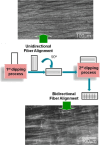



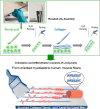


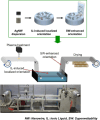
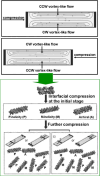

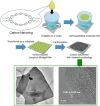




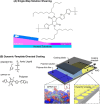


Similar articles
-
Materials Nanoarchitectonics at Dynamic Interfaces: Structure Formation and Functional Manipulation.Materials (Basel). 2024 Jan 4;17(1):271. doi: 10.3390/ma17010271. Materials (Basel). 2024. PMID: 38204123 Free PMC article. Review.
-
Interfacial nanoarchitectonics: lateral and vertical, static and dynamic.Langmuir. 2013 Jul 9;29(27):8459-71. doi: 10.1021/la4006423. Epub 2013 Apr 19. Langmuir. 2013. PMID: 23547872 Review.
-
Liquid-Liquid and Liquid-Solid Interfacial Nanoarchitectonics.Molecules. 2024 Jul 3;29(13):3168. doi: 10.3390/molecules29133168. Molecules. 2024. PMID: 38999120 Free PMC article. Review.
-
Self-assembly as a key player for materials nanoarchitectonics.Sci Technol Adv Mater. 2019 Jan 31;20(1):51-95. doi: 10.1080/14686996.2018.1553108. eCollection 2019. Sci Technol Adv Mater. 2019. PMID: 30787960 Free PMC article. Review.
-
Nanoarchitectonics: what's coming next after nanotechnology?Nanoscale Horiz. 2021 May 4;6(5):364-378. doi: 10.1039/d0nh00680g. Nanoscale Horiz. 2021. PMID: 33949390
References
-
- Shinde P. A.; Abbas Q.; Chodankar N. R.; Ariga K.; Abdelkareem M. A.; Olabi A. G. Strengths, Weaknesses, Opportunities, and Threats (SWOT) Analysis of Supercapacitors: A Review. J. Energy Chem. 2023, 79, 611–638. 10.1016/j.jechem.2022.12.030. - DOI
Publication types
LinkOut - more resources
Full Text Sources

